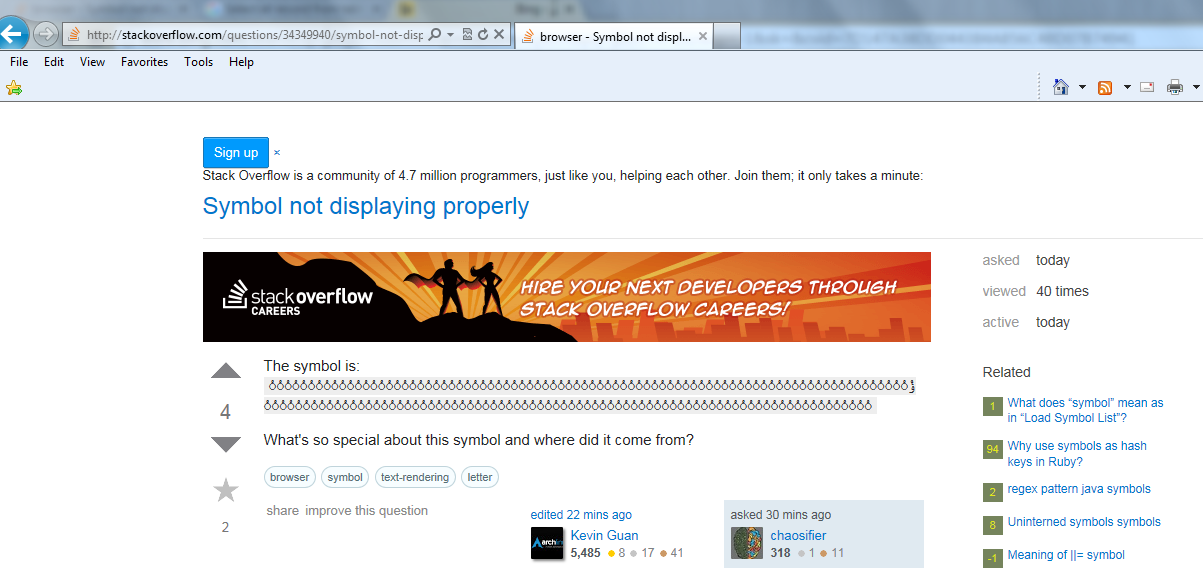I am not sure if parsing your symbols in Javascript is gonna be helpful but here is a script that does that:
var text = 'your symbol goes here',
regex1 = /(?:[\u0624|\u0652])/g,
result;
// note that the symbol comprises of the letter and the repeated diacritics;
// to remove the symbol completely:
result = text.replace( regex1, '');
Here is a way to see what kind of characters are included in the symbol and how these chars made it looked very weird (it’s using javascript regex):
https://regex101.com/r/yW4aM8/3
You may wanna use meta tag: charset=UTF-8 to render the entire symbol correctly on all browsers than trying it only on IE. I would say the only reason your symbol looks weird is because the diacritics (the repeated chars) are not used correctly, otherwise, the chars included are all legit. I wouldn’t really be surprised if this symbol is just someone trying to misuse a form input or something for the same effect.
The symbol is using pure Arabic characters, and just for you to know the range of this language’s characters in the unicode are as follows (javascript regex) and available at unicode.org:
/[\u0600-\u06FF]/g
/[\u0600-\u06FF]/g.exec( ‘text here’ );
// it's advised that you wrap the Arabic words in spans to control and show them correctly, do the following:
'text includes arabic words'.replace(/(?:([\u0600-\u06FF]+))/g, '<span class="xyz">$1</span>';
and the css would be:
.xyz { unicode-bidi: bidi-override; }
I hope that helps a bit.
good luck.


